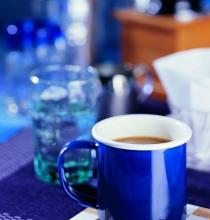Introduction to the flavor of Costa Rican coffee
Costa Rican coffee is definitely a boutique that grew up in a superior environment. There are no fluctuations in the economic environment brought about by the war, with the strong support of the government, and there is a climate and altitude suitable for the growth of fine coffee. SHB in Costa Rica grows at an altitude of about 1500 meters above sea level. Volcanic ash soil provides nutrients for coffee growth, and there are enthusiastic and serious coffee producers.
Various favorable conditions make Costa Rican coffee very popular with coffee drinkers. One of the most eye-catching is the Costa Rican Tara beads (Tarrazu) produced in the Tarazu region near the capital San Jose. The producing areas benefit from the warm and wet air flow in the Pacific Ocean and have obvious dry and wet seasons. the weakly acidic volcanic soil is rich in organic matter, which creates good conditions for the root development of coffee plants.
The producing area is 9-1600 meters above sea level, 80% of which is located at 1000-1400 meters. This kind of coffee is famous for its excellent quality and rich and balanced taste. Even the coffee from Laminita Farm in the region is thought to have a flavor similar to Blue Mountain coffee.
Costa Rican coffee is mostly washed, and honey-treated beans are not common. Honey treatment in Xiaoxu store inherits the balanced taste of Costa Rican coffee and brings more surprises in terms of mellowness and richness. Costa Rican coffee has a unique aroma, similar to flower aroma and faint fruit aroma, but the feeling is not turbid, but fresh and full-bodied, as if it can infiltrate the whole body through the skin.
It is reminiscent of the beauty and tranquility of Costa Rica and the enthusiasm and cheerfulness of Costa Ricans.
Maybe coffee really has a feeling. Growing up in such a beautiful country, coffee also brings out such a gentle and quiet temperament. No matter what kind of mood, a cup of Costa Rican coffee will bring you the most gentle experience. Such a good coffee is worth waiting for.

Important Notice :
前街咖啡 FrontStreet Coffee has moved to new addredd:
FrontStreet Coffee Address: 315,Donghua East Road,GuangZhou
Tel:020 38364473
- Prev

How many varieties of coffee beans are there in the world
There are more than 70 kinds of coffee in the world, of which 3 are mainly cultivated in China. ① small seed species, also known as Arabica coffee, is native to Ethiopia and is cultivated in Taiwan, Fujian, Guangdong, Guangxi, Yunnan and Sichuan. Shrub, 4-6 m tall, with many branches in the basal part; leaves thinly leathery, ovate-lanceolate or lanceolate, entire or undulate, terminal bud green or bronzed, so
- Next

The traditional way of drinking coffee: take a large inventory of lattes & how to mix #160;
1. Italy: it is a kind of espresso in a small cup, which can be cooked and drunk quickly. People who have been in contact with the coffee for a long time can get used to its heavy taste. 2. France: the French prefer light coffee, which is generally made from moderately roasted and roughly ground coffee beans by soaking. I like to drink it with chicory root. 3. UK: coffee powder is usually filled
Related
- Does Rose Summer choose Blue, Green or Red? Detailed explanation of Rose Summer Coffee plots and Classification in Panamanian Jade Manor
- What is the difference between the origin, producing area, processing plant, cooperative and manor of coffee beans?
- How fine does the espresso powder fit? how to grind the espresso?
- Sca coffee roasting degree color card coffee roasting degree 8 roasting color values what do you mean?
- The practice of lattes: how to make lattes at home
- Introduction to Indonesian Fine Coffee beans-- Java Coffee producing area of Indonesian Arabica Coffee
- How much will the flavor of light and medium roasted rose summer be expressed? What baking level is rose summer suitable for?
- Introduction to the characteristics of washing, sun-drying or wet-planing coffee commonly used in Mantenin, Indonesia
- Price characteristics of Arabica Coffee Bean Starbucks introduction to Manning Coffee Bean Taste producing area Variety Manor
- What is the authentic Yega flavor? What are the flavor characteristics of the really excellent Yejasuffi coffee beans?

